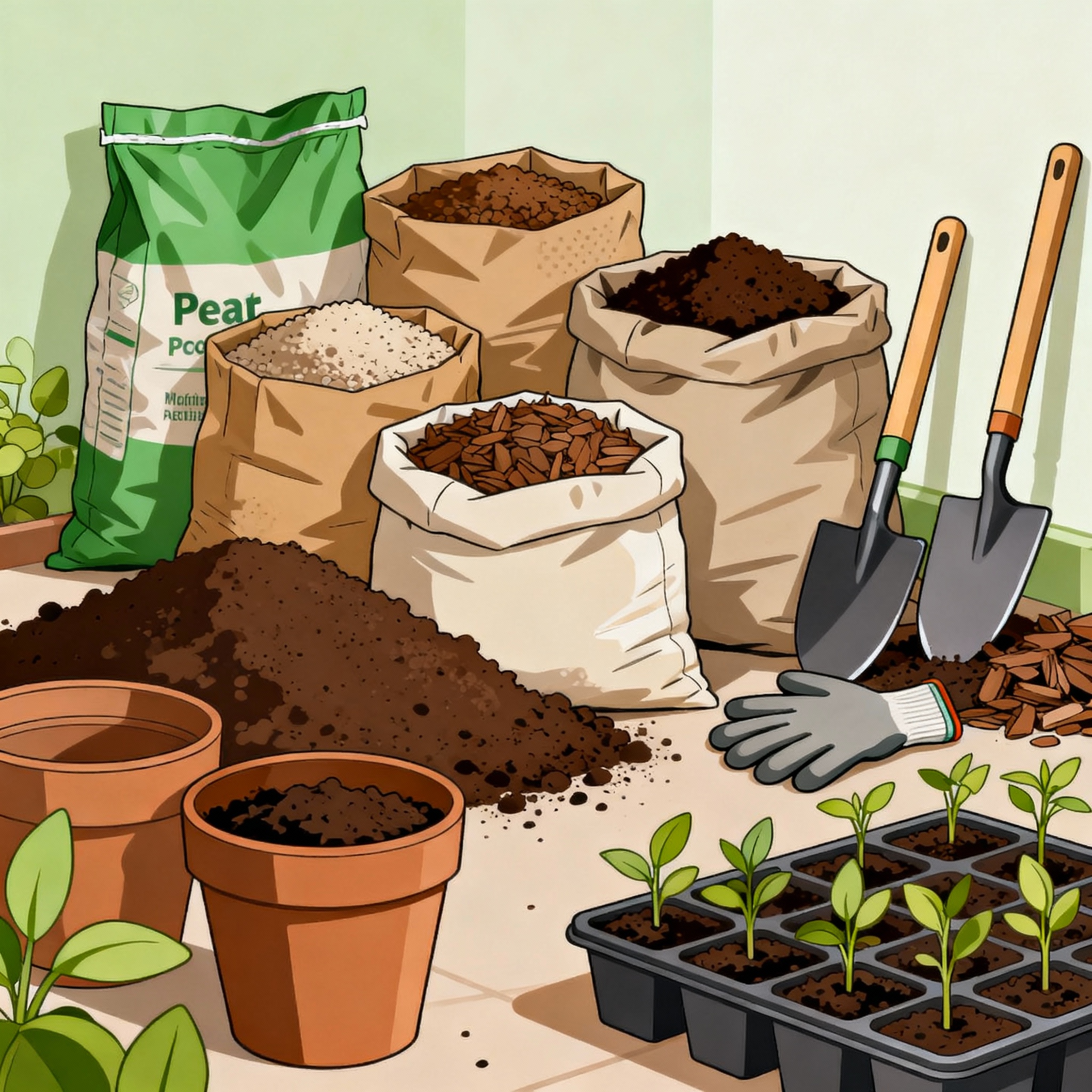Custom Potting Mix Calculator
🌱 General Purpose
All-around mix for most plants
🌾 Seed Starting
Fine, sterile mix for seeds
🌵 Succulent/Cactus
Fast-draining mix
🌺 Orchid Mix
Bark-based with drainage
Potting Mix Recipes
🌱 General Purpose Mix
For: Most houseplants, vegetables
- 40% Peat moss or coco coir
- 30% Compost
- 20% Perlite
- 10% Bark or vermiculite
Features: Balanced drainage and retention, nutrient-rich
🌾 Seed Starting Mix
For: Seeds and cuttings
- 50% Peat moss or coco coir
- 0% Compost (sterile mix)
- 30% Vermiculite
- 20% Perlite
Features: Fine texture, sterile, excellent moisture retention
🌵 Succulent/Cactus Mix
For: Succulents, cacti, jade plants
- 30% Peat moss or coco coir
- 20% Compost
- 40% Perlite or pumice
- 10% Coarse sand
Features: Fast drainage, prevents root rot
🌺 Orchid Mix
For: Phalaenopsis, cattleya orchids
- 0% Peat moss
- 0% Compost
- 20% Perlite or charcoal
- 80% Bark chips (medium grade)
Features: Excellent air circulation, chunky texture
🌿 African Violet Mix
For: African violets, gesneriads
- 50% Peat moss
- 20% Compost
- 25% Perlite
- 5% Vermiculite
Features: Light, airy, slightly acidic
🥬 Raised Bed Mix
For: Raised garden beds
- 30% Peat moss or coco coir
- 40% Compost
- 20% Perlite
- 10% Topsoil or garden soil
Features: Nutrient-dense, supports heavy feeders
Potting Soil Component Guide
🌾 Peat Moss
Purpose: Water retention, acidity
Pros:
- Excellent water retention
- Lightweight and sterile
- Lowers pH (acidic)
- Long-lasting
Cons:
- Not renewable resource
- Difficult to rewet when dry
- Low nutrient content
🥥 Coco Coir
Purpose: Sustainable peat alternative
Pros:
- Renewable resource
- Good water retention
- Rehydrates easily
- pH neutral
Cons:
- May contain salts (rinse first)
- Breaks down faster than peat
- Can be expensive
🌱 Compost
Purpose: Nutrients, beneficial microbes
Pros:
- Rich in nutrients
- Improves soil structure
- Adds beneficial microbes
- Sustainable and free (homemade)
Cons:
- Can be heavy when wet
- Quality varies
- May contain weed seeds
⚪ Perlite
Purpose: Drainage, aeration
Pros:
- Excellent drainage
- Lightweight
- Sterile and pH neutral
- Doesn’t decompose
Cons:
- Creates dust when dry
- Floats to surface
- Non-renewable mineral
🟤 Vermiculite
Purpose: Water retention, aeration
Pros:
- Holds water and nutrients
- Improves aeration
- Sterile and lightweight
- pH neutral
Cons:
- Compacts over time
- Can hold too much water
- Non-renewable
🪵 Bark/Wood Chips
Purpose: Drainage, structure
Pros:
- Excellent drainage
- Prevents compaction
- Long-lasting
- Renewable resource
Cons:
- Can tie up nitrogen
- Takes time to decompose
- Quality varies by type
💡 Mixing Tips
- ✓ Mix components thoroughly when dry for even distribution
- ✓ Pre-moisten peat moss or coco coir before mixing
- ✓ Wear a dust mask when working with dry perlite
- ✓ Store unused mix in sealed containers or bags
- ✓ Sterilize homemade compost before use (heat to 160°F)
- ✓ Add slow-release fertilizer if using low-nutrient mix
User Guide for Potting Soil Calculator
What it does:
This calculator helps you determine the optimal mix and quantities for making potting soil based on components like peat, compost, perlite, and bark. It supports multiple mix ratios for different plant types.
How to use:
- Select preset mix ratios for seed starting, houseplants, succulents, or custom blends.
- Input the total volume needed in cubic feet, gallons, or liters.
- Adjust component percentages if allowed, to tailor the mix for your plants.
- Calculate the amounts of each component required.
- Review the detailed breakdown and instructions for mixing.
- Use the guide section for tips on mixing, storing, and applying potting soil.
Tips:
- Use adequate drainage materials for succulents and cacti (higher perlite).
- Add compost for nutrient-rich houseplant mixes.
- Adjust peat and bark proportions to modify water retention and aeration.
- Make in small batches initially to test plant response.
- Store unused mix in sealed containers or bags.

Angelina Everly leads the editorial desk at Live Green Gardens, blending practical plant care, hands-on product testing, and approachable outdoor styling. She focuses on step-by-step how-tos, buyer’s guides, and small-space makeovers that work in real life and real budgets. When she’s not comparing pruning shears or setting up a drip kit, you’ll find her creating cozy corners with planters, solar lights, and pollinator-friendly picks—always with clear pros/cons and safety notes so you can buy once and garden happy.

